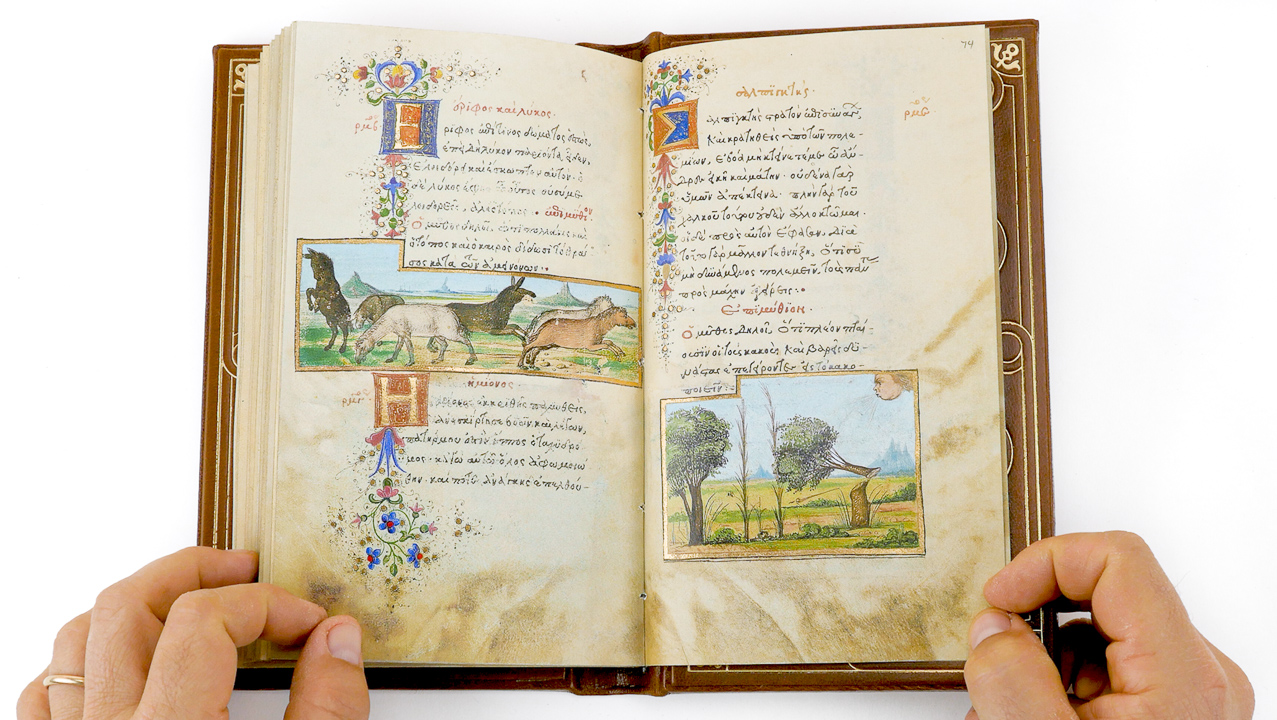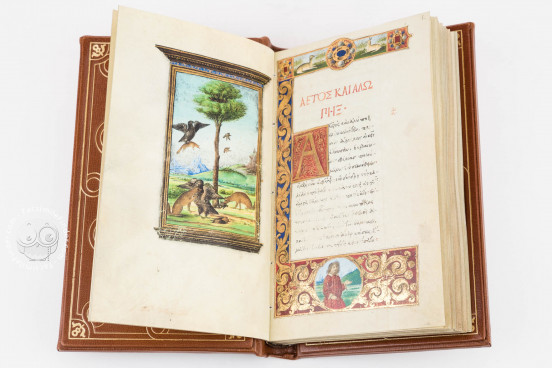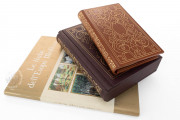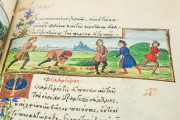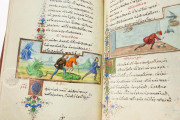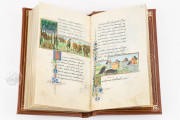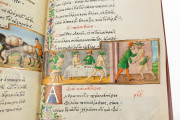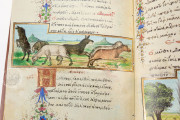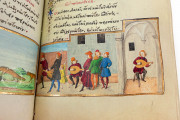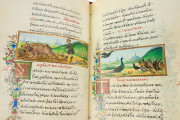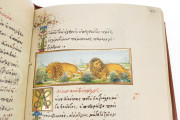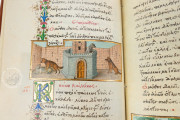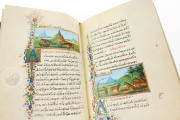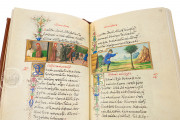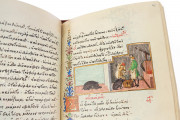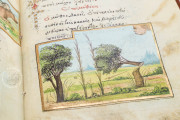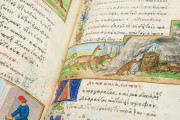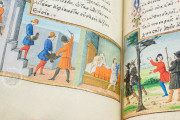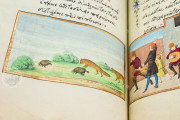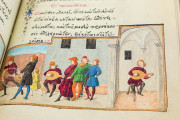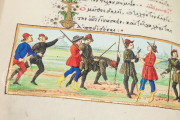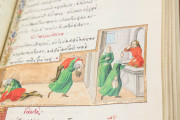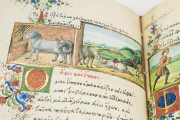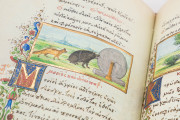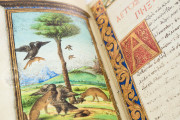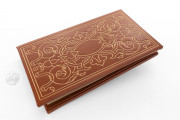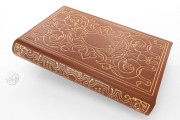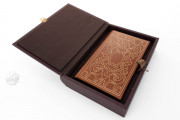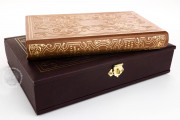The Medici Aesop is an illuminated masterwork of the Italian Renaissance commissioned in Florence in the late fifteenth century. While it was likely made to serve the educational purpose of teaching Greek to its reader, the splendor of the codex with its 135 narrative miniatures divulges the adamant aesthetic aspiration to create a jewel of a book fit for a prince.
Although the original substance of the book had been reduced over the centuries, the Medici Aesop currently contains a generous selection of the renowned fables attributed to Aesop—the ancient Greek enslaved fabulist said to have lived in the seventh and sixth centuries BCE and who was freed for his great wit and storytelling abilities—prefaced by a biography of the author by Maximus Planudes (d. 1310). Written in Greek, the surviving 135 fables in the book are decorated with exquisite miniatures complemented by large, decorated initials throughout.
A Repository of Fifteenth-Century Florentine Illumination
Framed in gold and painted in vivid colors, the miniatures of the Medici Aesop capture the height of Florentine illumination in the fifteenth century. Scholars have attributed the miniatures to Francesco d'Antonio del Cherico, Mariano del Buono, and the Master of the Hamilton Xenophon. The opening pages of the fables (private collection, fol. 54v and New York, fol. 1r) herald the grandeur of the following pages with a full-page miniature facing a three-sided illuminated border bearing a curious author portrait of the famed Aesop in a medallion in the lower border.
Copied from a Printed Book
The Medici Aesop was written at a time when printing was gaining precedence as a common mode of textual transmission. As such, it is interesting to note that its text was copied from a printed version of Aesop’s fables, published in Milan in 1480 and edited by Bono Accursio. The scribe was Demetrios of Crete (aka Demetrios Damilas), who worked in Florence between 1480 and 1490.
A Critical Witness to Italian Humanism
Among the most prominent Florentine clientele of Demetrios was the esteemed Medici household, for whom this book was almost certainly made. Lorenzo de' Medici (1449-1492) probably commissioned it for his young son, Piero di Lorenzo de' Medici (1472-1503), who was learning Greek from Angelo Poliziano.
A Changing and Shrinking Book
The Medici Aesop went through several changes as it changed hands over the centuries: the Aesop biography was separated from the fables by 1833, only 135 fables survive from the original collection of 147, and numerous miniatures were also removed over time. The manuscript is listed in an inventory of Piero's library of 1495, and it probably remained in Medici hands well into the sixteenth century.
The biography passed through the hands of the bookselling Rosenthal family before being acquired by a private collector. After the Medici inventory of 1495, the fables can next be firmly documented in the possession of the English bibliomaniac Sir Thomas Philipps (1792-1872). It was purchased by the New York Public Library in 1946.
We have 1 facsimile edition of the manuscript "Medici Aesop": Esopo Medici facsimile edition, published by Patrimonio Ediciones, 2011
Request Info / Price
